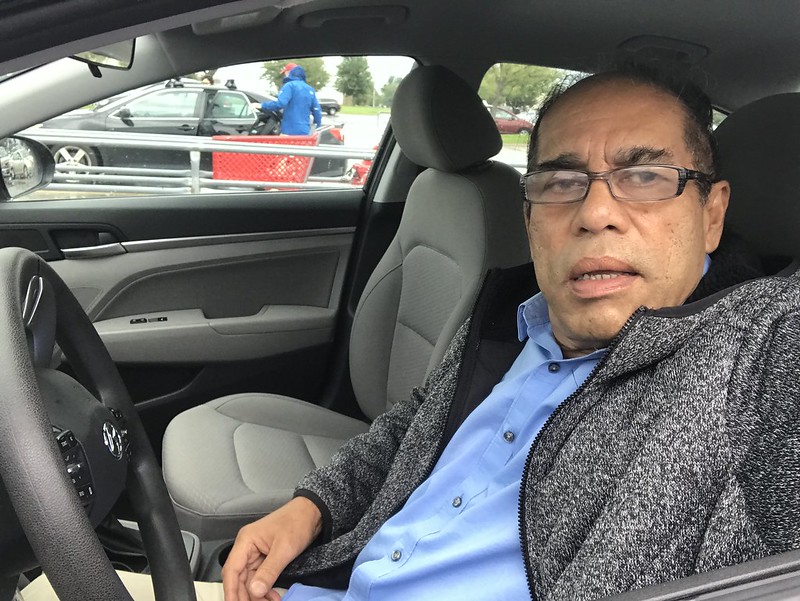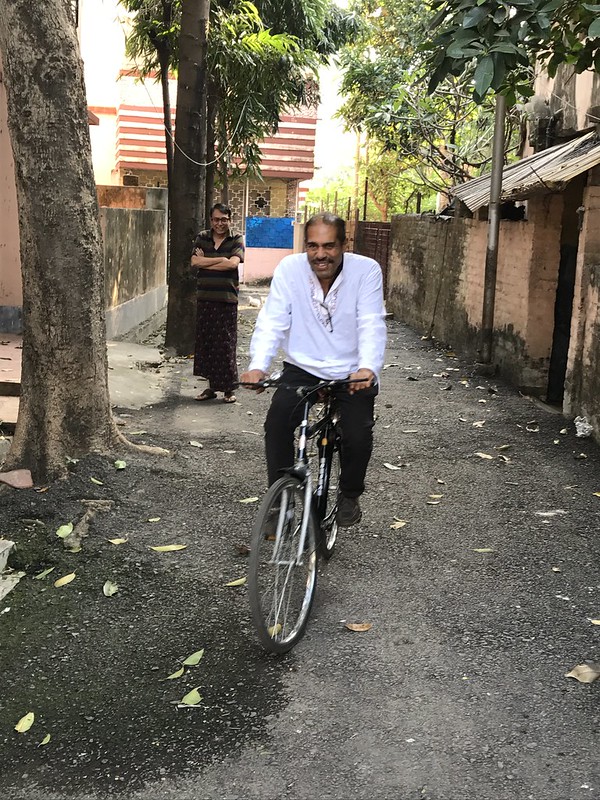
After writing Part 1, my economist friend, Dr. P brought to my attention Dixit’s book on “order and lawlessness”.
Dixit talks about “order without law” and gives an example of Indian traffic as a situation where order is apparently accomplished without anyone seriously paying attention to the laws. Dixit was not seriously analyzing India’s traffic situation, and his example is a good one for econ textbooks.
But come on ? ORDER? Freaking order? On Indian streets? No sir! What we have is a miserable feasible solution to the traffic quagmire every day, created by absolutely moronic lawlessness practiced by everyone on the road and everyone suffering from serious mental anguish and often physical harm from this wretched state of affairs. This feasible solution comes at a huge social cost!
What social cost, you may ask! I say, open your eyes: Non-drivers and/or people who have never been abroad find it difficult to comprehend the veracity of this social cost, but they bear it regardless.
There are four kinds of streets in Kolkata – (apart from restricted highways meant only for cars)
Arterial streets like Central Avenue, Rashbehari Avenue etc,.
Main roads , with bus and truck traffic along with other vehicles.
Side streets with shops , bustling with traffic (cars, taxis and vans and two and three wheelers) , but no buses or trucks.
Residential streets without shops that are not perceived as shortcuts to any of the side streets (I will call them “little streets”)
Arterial streets actually have more orderly traffic and sidewalks,
But on main roads and side streets, are you worried to walk as a pedestrian? Of course you are!
Social cost #1!
Can you walk to visit others or to shop or walk to work to a place two to five kilometers away? Even though you may be in good health for walking, you are annoyed or scared by the traffic and the noise and you refuse this easy way to get some exercise. In many countries of the world , not only in venerable Western Europe, but in Eastern Europe, lowly Central Asia, crowded south East Asia, Japan, Korea and populous China (yes in modern Beijing with its wide boulevards and humongous sidewalks),and in many other places, you can walk to go shopping or visit friends or go to work, and get some free exercise! Never in Kolkata or Delhi! People drive their cars or motor bikes to go to parks to walk !
Social cost #2!
Noise from Horns
This noise is found to be very annoying to most people. If you go to a village in India or go abroad, your ears are stunned by the silence caused by lack of incessant honking. While some drivers in India are pathological honkers, most use their horns frequently to survive on the anarchic city streets. Honking is primarily defensive and necessary for survival – you come to any intersection, you honk; you pass another car, you honk so he does not sideswipe you; you are taking a right turn , you honk so that oncoming traffic is aware of you. And of course, if you yourself are breaking traffic laws, you honk really loud – if you are passing a vehicle on the left you honk loudly, if you are passing a pedestrian or a bicycle by a margin of 12 inches, you honk loudly so that he does not suddenly move to the right and die from your vehicle hitting him; if you are zooming out of a busy intersection on the wrong side of the road, you honk super loud to save yourself from about fifteen accidents that were going to happen in the next ten seconds!
So honking is necessary in a world of idiotic and lawless driving and everyone is delighted by the incessant noise (just kidding!)
Social cost #3!
Semi-Skilled people can not utilize their skills.
Really, a well-trained monkey can drive a modern automobile with an automatic transmission! That’s the whole point with modern technology. Microwave makes cooking (at least some part of the cooking process) easier, again a monkey can operate a microwave. Ipads make browsing easier, again a monkey can work with it! Modern technology enables average people to handle complicated machinery, we all benefit from it. In the rest of the world average people can safely drive themselves from point A to B, without fear of getting mauled or traumatized. Not in India! I am an average driver of cars who has driven about 800,000 (that’s eight lakh kilometers) during my time in the USA, and I have driven in Manhattan in New York , on 12 lane super highways in California , and on winding mountain roads in the Rocky Mountains, but I shake and tremble at the thought of driving on busy Indian streets. Plus I will need to pay a skilled driver to drive my car. All because of idiotic and lawless driving!
Social cost #4,5,6,7,8 … described below
Delay in commuting, caused by unnecessary traffic jams caused by idiotic and lawless driving.
Fear of accidents, caused by idiotic and lawless driving
Lack of freedom for small children, they can not be trusted to walk on the streets alone, caused by idiotic and lawless driving
Accident victims and heart attack patients succumbing to their ailments because of delays in going to the hospital, caused by idiotic and lawless driving
Terror from walking on the side streets because of roaring motorbikes approaching or driving around, caused by idiotic and lawless driving.
And the list goes on.
Finally, the drivers themselves bear an enormous amount social costs. Just ask, if you will, a driver of a front-heavy three wheel vehicle, like the one carrying gas cylinders, machinery , or food . Those are actually very difficult to operate and the drivers are terrified at all times. The bicycle riders like myself are scared to death every day . It took me about three months to reclaim my forgotten skills to maneuver a bicycle on Kolkata streets. After riding for about two years , I decided to give up riding on Arterial streets or main streets (with bus and truck traffic) altogether. I now only ride through side streets and little streets. The reason is a simple calculation of probabilities:
On an arterial street or a main street, probability of death or mutilation or broken bones from an accident is significant and positive every day, while on a side street or a little street, that probability is very small.
On an arterial street or a main street, probability of laceration, bruises and mangled bicycles from an accident is significant and quite high every day, on a side street or a little street, that probability is merely significant and positive.
I ride for exercise, so there is no time constraint, and I feel reasonably safe on my well-calculated routes, which include mostly left turns and mostly little streets. But there are thousands of bicycle riders everyday on Kolkata streets that live with these odds, because of idiotic and lawless driving.
And I have talked to taxi drivers and truck drivers in India, they are constantly terrified of others, yes even those that break traffic rules constantly are terrified of others breaking traffic rules. They actually feel a lot relaxed on the restricted access highways , but there are only a few miles of those in Kolkata.
So what we see in big cities of India is persistence of idiotic and lawless driving which induces the social Nash equilibrium that is the anarchic appearance of order. A little bit of cooperation among drivers or serious enforcement of laws by a third party will reduce all these costs that I mentioned above- isn’t that something to think about?
I simply point out the cameras that have been installed at major intersections in Kolkata. Accidents from vehicles running red lights have almost disappeared at major intersections like magic, but they still exist at the minor ones without cameras .
Please note that I refrained from discussing health care cost for accident victims , but that is of course part of this social cost.
How did all these evolve? That’s a complex question, I will attempt to answer it in part 3.

P.S.
From Hindustan Times
“A total of 151,113 people were killed in 480,652 road accidents across India in 2019, an average of 414 a day or 17 an hour, according to a report by the transport research wing of the ministry of road transport and highways.
India continued to have the most road fatalities in the world, followed by China, a distant second at 63,093 deaths in 2,12,846 road accidents in 2019, the report revealed. The United States of America (USA) reported the most road accidents at 2,211,439, and witnessed 37,461 deaths in 2019.According to the report, speeding was the leading cause of deaths, while, in terms of vehicles, two-wheelers were involved in most road fatalities.”
“Two-wheelers were involved in 37% of the road deaths in the country, followed by pedestrians at 17% and light vehicles (comprising cars, jeeps and taxis) at 16%. A total of 56,136 people riding two-wheelers lost their lives, while 25,858 pedestrians died in 2019″, stated the report.”
See I was correct about drivers of two wheelers with alleged magnum male endowments and minuscule skills in other areas



